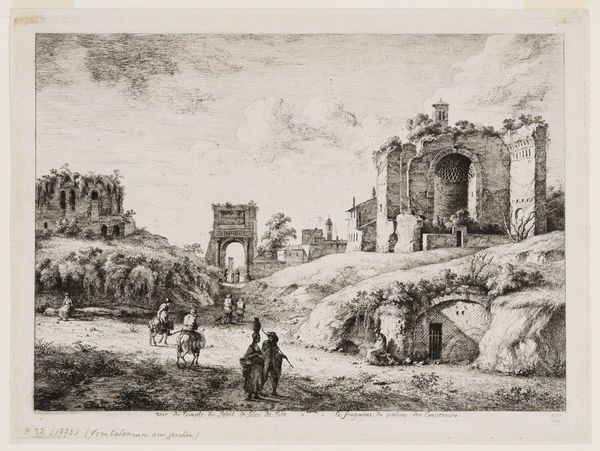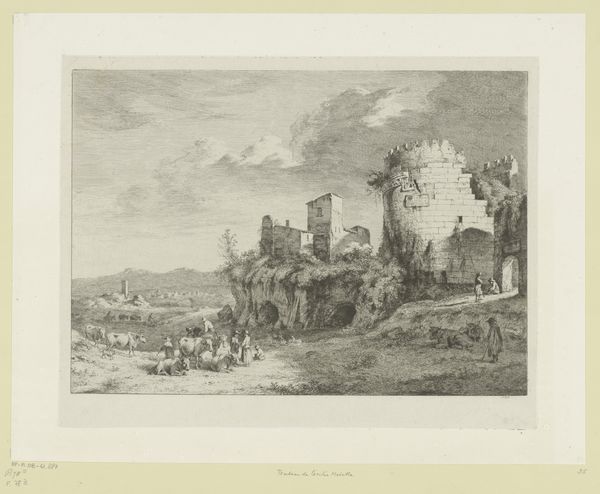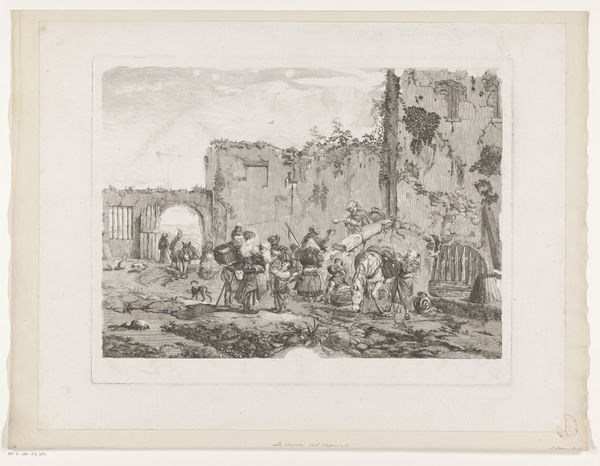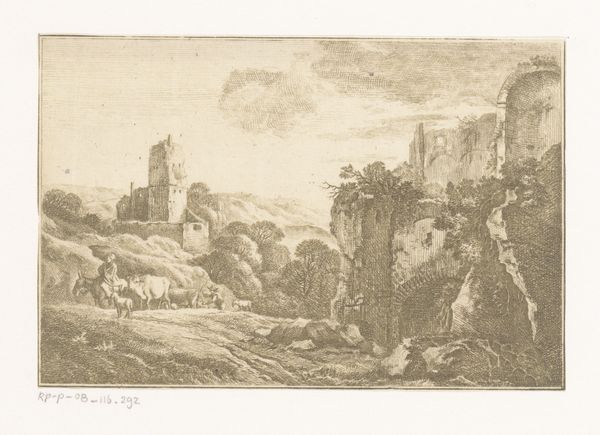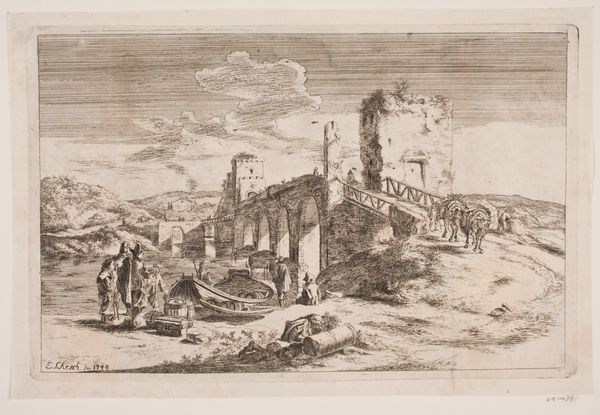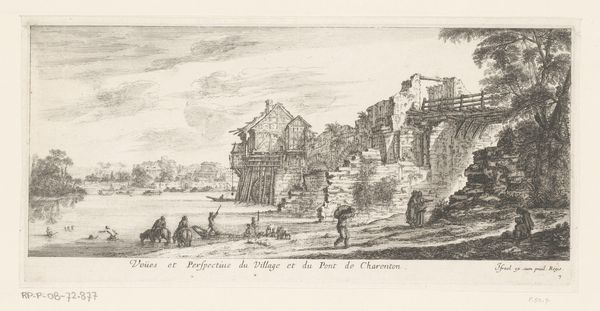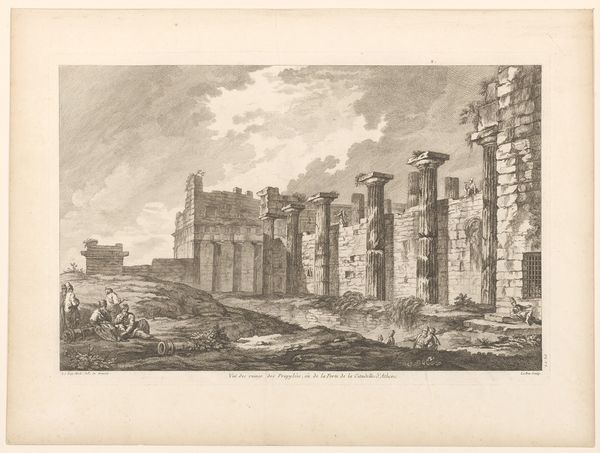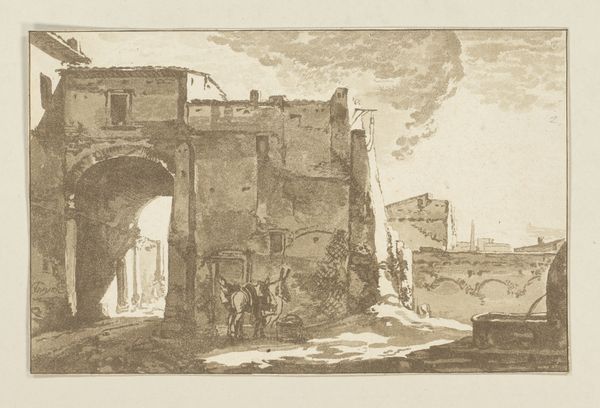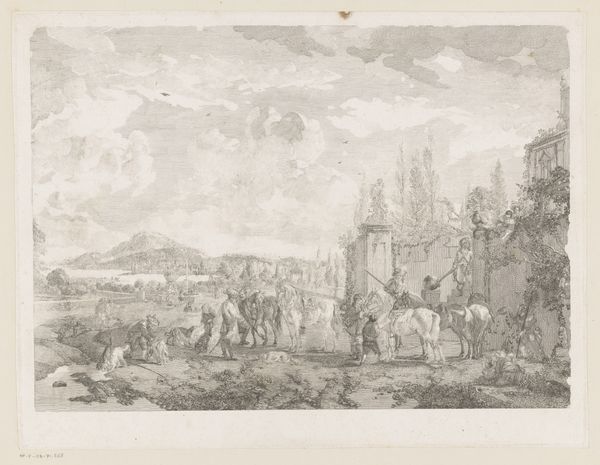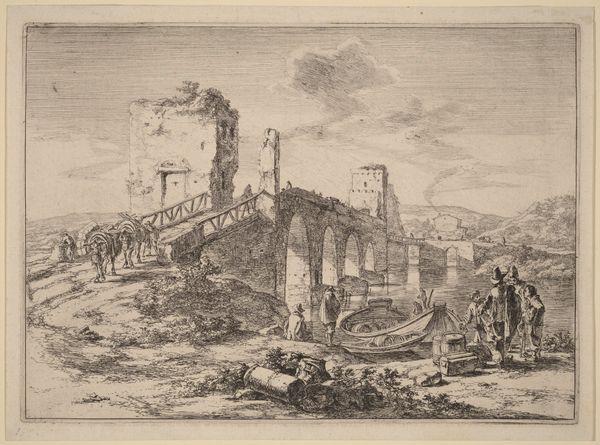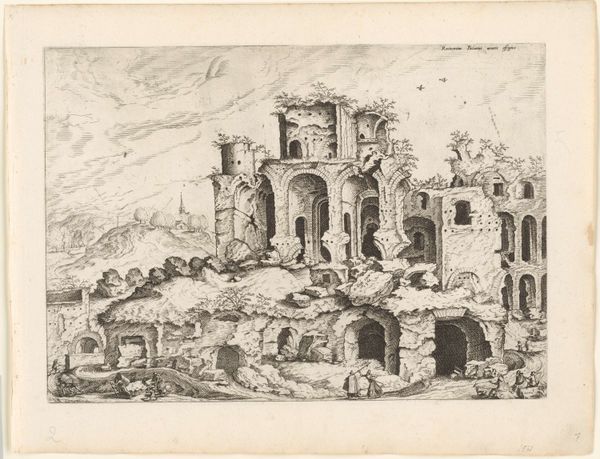
Gezicht op het Forum Romanum met de Boog van Titus en de Tempel van Venus en Roma 1773
0:00
0:00
drawing, print, etching
#
drawing
# print
#
etching
#
pencil sketch
#
old engraving style
#
landscape
#
classical-realism
#
cityscape
#
history-painting
Dimensions: height 264 mm, width 353 mm
Copyright: Rijks Museum: Open Domain
Curator: This etching by Jean Jacques de Boissieu, dating back to 1773, presents a "View of the Roman Forum with the Arch of Titus and the Temple of Venus and Rome." Editor: It’s immediately striking how de Boissieu uses light and shadow to sculpt these ancient forms. The contrast gives it a very dramatic and melancholic feel. Curator: The Forum was not simply an aesthetic element, it stood as the central, most vital location of the old Roman republic. The people passing through and the lives lived within its walls remind us that it wasn't simply architectural, but rather an organic creation of power, exchange, and civic life. The ruins act as a silent protest against today's world of fleeting power, hyper consumption, and eroded human connection. Editor: Absolutely. Looking at the ruins themselves, the texture and line work really emphasize their decay. Notice how de Boissieu has carefully modulated the hatching to suggest the wear and tear on the stone, but the formal clarity helps give definition and substance to these once regal constructions. Curator: Indeed, the romanticising of ruins became a kind of artistic language for questioning the status quo of absolute power in 18th century Europe. De Boissieu utilizes that romantic lens as a tool to question and even to challenge the divine authority upheld by aristocracy. The figures walking amid these ruins echo this message. Editor: I appreciate how the composition subtly guides the eye. The Arch of Titus is a focal point, but the eye is naturally drawn around the landscape, noticing the meticulous construction and architectural relationships. It almost seems de Boissieu intended to map out a spatial and symbolic interplay. Curator: To see this work as a subtle form of advocacy enriches the experience, giving the calm classical scenery additional dimensions of historical criticism. The composition then operates less like a picturesque postcard and more like an understated social statement. Editor: Ultimately, seeing the beauty of ruins while being informed of their context encourages a more reflective experience. The balance between form and social consciousness allows us to see history with more complete awareness.
Comments
No comments
Be the first to comment and join the conversation on the ultimate creative platform.
